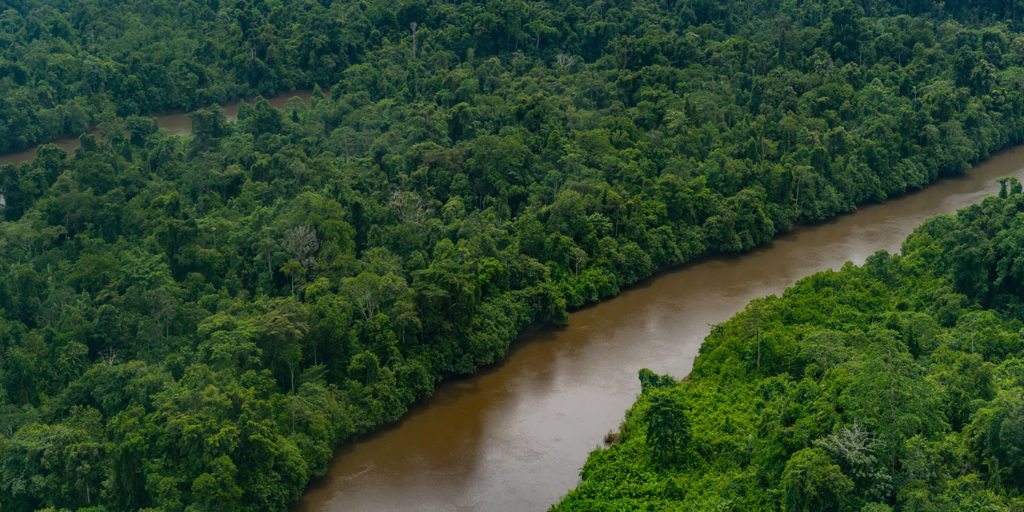The New Guinea checklist: a botanical distillation of the last unknown
“I know of no part of the world, the exploration of which is so flattering to the imagination, so likely to be fruitful in interesting results, … and altogether so well calculated to gratify the enlightened curiosity of an adventurous explorer, as the interior of New Guinea.” – J.B. Jukes, 1847
New Guinea is a land of evocative contrasts. The world’s largest tropical island, made up of Papua New Guinea to the east, and Indonesia to the west, its biodiversity spans habitats from fringing mangroves to alpine grasslands. Among the rugged landscapes are some of the world’s last remaining areas of relatively intact tropical rainforest.

New Guinea orchids: Dendrobium tapiniense, Dendrobium subclausum, Bulbophyllum alkmaarense, Dendrobium cuthbertsonii (Photos: a-c, Andre Schuiteman; d, William J. Baker).
Despite scientific interest dating back to the 17th century, formal knowledge of New Guinea’s biological diversity has remained limited. Until recently, our estimates of the number of vascular plants on the island varied widely, ranging from 9,000 to 25,000 species.
To solve this mystery, our global team of 99 scientists from 56 institutions built the first ever expert-verified checklist. We found there are 13,634 scientifically described species of plants in New Guinea, of which a remarkable 68% are only known to occur there. This richness trumps both Madagascar (11,488 species) and Borneo (11,165 species), making New Guinea the most floristically diverse island in the world.
This work builds on many decades of dedication by plant collectors generating countless field stories under leaking canvas, grass huts and bark shelters. Sampling water plants by jumping from helicopters hovering low over Lake Tebera. Swimming in the Purari River to haul a disabled dugout canoe, full of botanists and cargo, to safety from the downstream rapids; crocodiles supervising on the opposite bank. Falling into a bed of stinging plants in the mountains of Wagau without subsequent access to pain relief. All in a day’s work of course!
After the field work the hard work began at herbaria around the world. Our team meticulously sorted collections for documentation, identification, description, distribution to world experts, and curation. It can take years before the results are written and submitted to scientific journals for publication, let alone synthesised into a higher level checklist.
The majestic flora of New Guinea
The flora of New Guinea is diverse, filled with the majestic, stunning, intriguing, and bizarre.
There are the few remaining forests of 60 metres high hoop pine (Araucaria cunninghamii) and klinkii pine (A. hunsteinii), that tower majestically up to 30 m above the already tall rainforest canopy. Figs, with their copious sap, are present in diverse forms, from small shrubs to vines, or large canopy trees. The irritant black sap of the Semecarpus tree is something that naive botanists must learn to avoid! Ryparosa amplifolia, a rainforest tree endemic to New Guinea, provides swollen hollow stems for ants to shelter in. It also produces energy rich ‘food bodies’ that provide its residents with sustenance. In return, the ants act as bodyguards, chasing away insect herbivores, and leaf cleaners.

Ryparosa amplifolia maintains an intimate association with ants via hollow stems and food bodies (Photos: Bruce Webber)
Some of our most popular foods were domesticated from New Guinea, including sugarcane and bananas. Yet it is the giant banana, Musa ingens, with leaves to 5 metres and growing more than 20 metres tall, that is a highlight of fieldwork in montane forests. With more than 2,400 species of endemic orchid species, New Guinea is one of the most spectacular floral gardens in the world, with species such as Bulbophyllum nocturnum, the first known example of a night-flowering orchid, and Bulbophyllum tarantula, with appendages that resemble the iconic spider.

The orchids Bulbophyllum nocturnum and Bulbophyllum tarantula, both endemic to New Guinea (Photos: Jan Meijvogel)
Opportunities and solutions for an uncertain future
Despite New Guinea’s seemingly high number of plant species, at least 3,000 species remain to be discovered and formally described. Further study, particularly using molecular tools, will no doubt reveal distinct species that are ‘hidden’ within current species concepts. Much of New Guinea, particularly the Indonesian part, have been extremely poorly studied, with very few plant species collected. Even within Papua New Guinea, the distribution of many species is inadequately known. Therefore, our findings should be viewed as a baseline upon which to prioritise further work.
Unfortunately, taxonomy —the discipline of identifying, classifying, and understanding relationships between plants— is suffering from global funding shortfalls and declining engagement. For instance, 40% of our co-authors on this work are 55 years or older. Within New Guinea, supporting future opportunities for botanical research led by New Guineans is key. However, only 15% of the scientific publications on the New Guinean flora over the past 10 years involved local co-authors. Improved collaboration between taxonomists, scientific institutions, governments and New Guinean scientific agencies could address these critical urgent priorities.
Despite New Guinea’s outstanding value, its unique plants are at increasing risk of extinction due to the rate of forest clearing and degradation, driven primarily by non-biological factors overlaid by additional pressure from global climate change. New conservation strategies would address the risk of losing entire species before they are even known. To this end, in 2018 the governors of Indonesia’s two New Guinea provinces announced the Manokwari Declaration, a pledge to conserve 70% of forest cover for the western half of the island.
Undoubtedly, the conservation of New Guinea’s unique flora will be challenging and require work on many fronts that transcend single disciplines or institutions. From what we know already, a world of botanical surprises awaits in the last unknown.
Bruce L. Webber, Barry J. Conn & Rodrigo Cámara-Leret
Read the original paper in Nature here: https://doi.org/10.1038/s41586-020-2549-5

Lowland tropical forest in Western Province, Papua New Guinea (Photo: Zachy Ezedin)